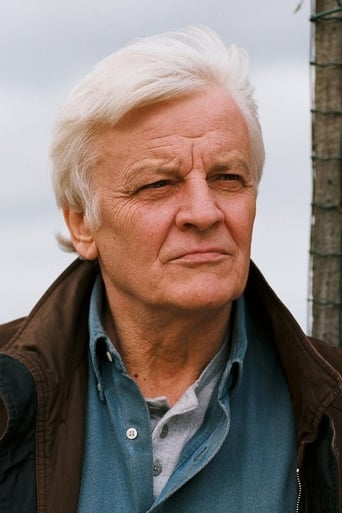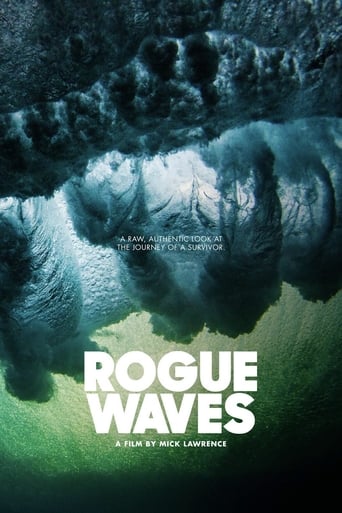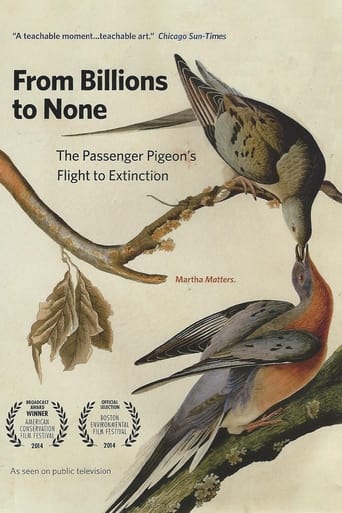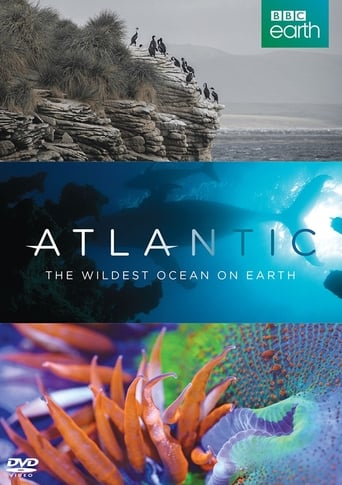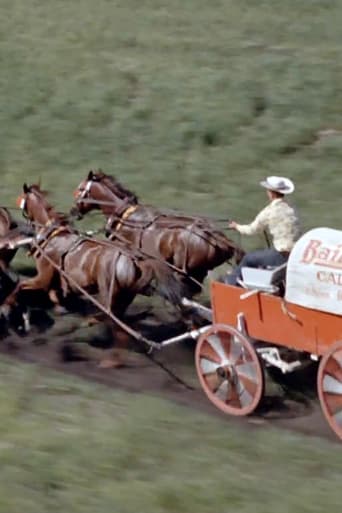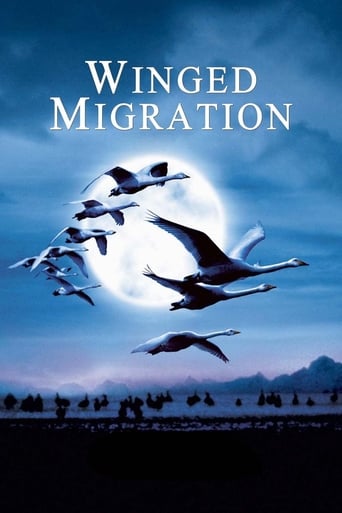
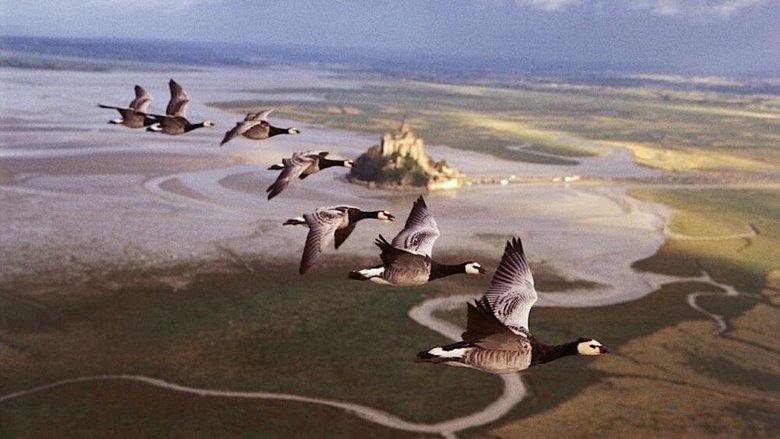
Winged Migration (2003)
This documentary follows various migratory bird species on their long journeys from their summer homes to the equator and back, covering thousands of miles and navigating by the stars. These arduous treks are crucial for survival, seeking hospitable climates and food sources. Birds face numerous challenges, including crossing oceans and evading predators, illness, and injury. Although migrations are undertaken as a community, birds disperse into family units once they reach their destinations, and every continent is affected by these migrations, hosting migratory bird species at least part of the year.
Watch Trailer
Cast


Similar titles
Reviews
The Cinema photography is beautiful in this film. It's a beautiful film and if you are a birder or have a love for wildlife, you would definitely enjoy it. It is unbelievable how far birds migrate.However, I was disappointed that you can't hear the narrator. I was also disappointed that the narrator didn't give more information on the behavior and communication of the birds. It wasn't as informative as the film could have been. I recommend seeing it, however just don't expect a lot of information on the birds.The subtitles are helpful,but there needs to be more information. Therefore, due to the lack of information, I give it a 7, maybe a 6.5.
This is my two-year-old daughter's favorite movie. She watches it as often as we allow her to. She particularly likes the pelicans and the "Candigle (i.e. Canada) Geese." Luckily, my husband and I also enjoy it -- the cinematography is impressive, and some of the images are stunning. Some of the scenes were staged, which is more apparent to us as adults, and the music is repetitive and in some cases overly dramatic or "inspirational," especially over the opening and closing credits. Still, given the awful tripe that small children sometimes become enthralled with, I think we are lucky; and if she asks to watch it on a nice day, we can suggest going to the local park instead, to see some real live birds.There are several scenes that might be upsetting to a young child. I have noted them in the Parents' advisory section. Our daughter is a little too young to understand what is happening in these scenes, so most of them don't bother her, but she does insist on getting on mommy or daddy's lap during a couple of scenes.
¿It is me or is it not extraordinary that a single documentary filming for hour and a half only birds? Alright, birds are cute, ¿Who doesn't love to see a parrot eating a piece of pie and chanting for 2 minutes? Well, Jacques Perrin achieves with extraordinary cameras (how did he do that?)to trap us in the poetic flight of a condor, in the lightness of an albatross and in the comical stumbles of a penguin. We are amazed just with looking at the bird, learning at its migratory course, and contemplating the fastuose sky that lies as a recurrent location. This film has a poetry, a music that involves the soft movements of the birds. If you are patient and decide to take up this challenge; one Sunday evening after you took a shower: trust me, It will be a everlasting experience.
Stunning as this movie is, there are many questions to be answered:* A bird may migrate 2000 miles, but how many halts does it make? * What kind of energy is expended by the bird during the migration? * what are the longest migrations ( Arctic Tern is THE longest, I believe). * How do the birds do it, even assuming instinct? Stars? Landmarks? Weather patterns? * What are the hazards? Hunters, oil sludge and such are shown in the movie but there are many natural hazards. * What are the ratio of birds starting vs completing the migration? * Why do birds migrate? Why many birds do not migrate? * Why migrate such long distances?I recommend a awe-inspiring informal companion book:Living on the Wind: Across the Hemisphere With Migratory Birds by Scott Weidensaul


